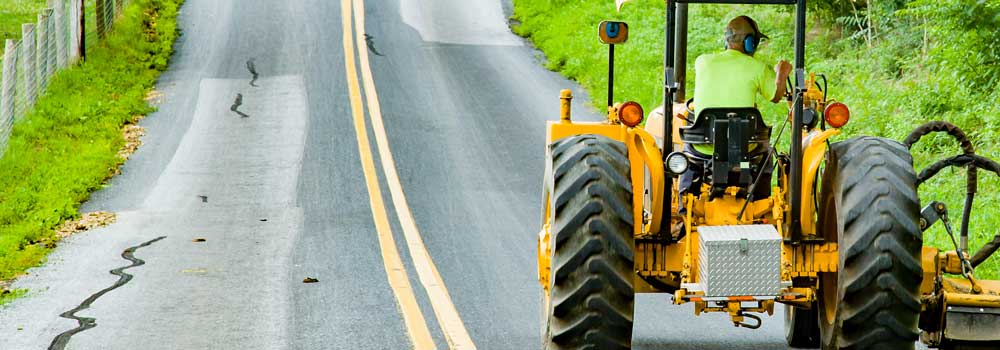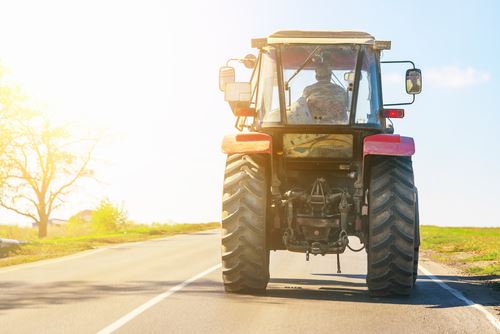Deadly accidents involving motor vehicles and tractors/farm equipment on rural roads continue to increase throughout the United States. There are three main reasons these types of accidents occur:
- More people are moving to rural areas and commuting to work in other towns and cities.
- 2-lane roads permit high-speed driving, creating a hazard for farming communities
- Farmers often own or lease land that isn’t connected to their main farm, forcing them to drive their farm equipment on public roads.
In 2014, transportation-related incidents accounted for half of all agricultural worker fatalities. Of these deaths, 27% were from crashes that took place on public roads. When farmers operate tractors and other slow-moving farm equipment on public roadways, it places them at great risk for being involved in a serious collision. However, tractor accidents aren’t just an occupational hazard exclusive to farmers, other people using roads in rural areas are also at risk. In fact, over a 10 year period, 82% of crashes involving farm equipment were with non-farm vehicles. According to studies, a driver in a non-farm vehicle is 5 times more likely to suffer an injury than the person operating the farm equipment.

Because the boundaries of rural and urban areas are starting to blend more and more, it is important to know how to stay safe when sharing the road with tractors and other types of farm equipment. To help decrease your chances of being in a tractor accident, follow the tips we provide below:
- Slow down when you are approaching a piece of farm equipment on a public road. Most farm equipment can only travel at speeds of 15 to 25 mph.
- Keep an eye out for slow-moving vehicle (SMV) signs. Vehicles that are traveling less than 25 mph are required to have SMVs.
- Pay attention to hand signals. Because farm equipment can require an operator to make wide turns, they may use additional hand signals to let you know to stay clear of their vehicle.
- Be cautious whenever when you attempt to pass a tractor/farm equipment. Even if you pass legally, the turbulence created when you pass by can cause the tractor/farm equipment to sway. Don’t assume a tractor driver or farm equipment operator will pull over to the shoulder of the road to let you pass by.
- Driving farm equipment with one set of tires on loose-surfaced shoulders can significantly increase the risk of turning over.
- Look out for flashing amber lights. These lights are usually on the far right and left of farm equipment. Some tractors also have reflective tape on the sides of equipment to increase visibility.
- Remember, farm equipment operators have the right to share public roads with other vehicles.
Think about these facts the next time you share the road with a tractor or other types of farm equipment:
- A car traveling at 50 mph has less than 10 seconds to avoid an accident with a tractor moving at 20 mph, 400 feet ahead.
- It only takes 5 seconds for a vehicle traveling 55 mph to close a 100-yard gap of an approaching tractor moving at 15 mph.
- Left-hand-turn collisions and rear-end collisions account for nearly 50% of all accidents involving motorists and farm equipment operators.

At Fowler | Helsel | Vogt, our team of Fresno personal injury lawyers is committed to helping our clients pursue their injury claims. We want to secure the compensation you are entitled to and we have the skills and resources you need to achieve a positive outcome in your case.
If you or a loved one suffered a serious injury in a tractor/farm equipment accident, you should call (559) 900-1280 today to discuss your case.


